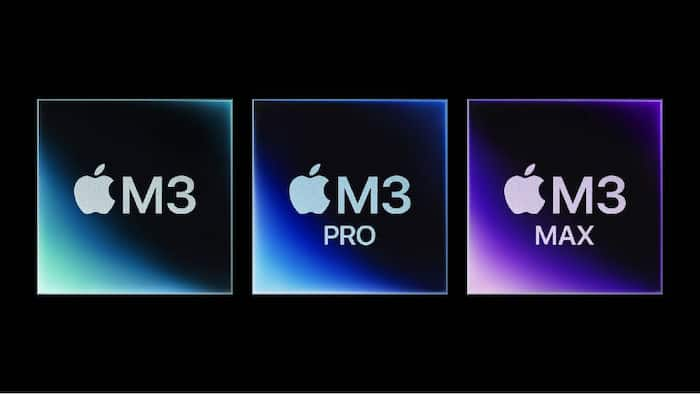
Written By Om Gupta
Published By: Om Gupta | Published: Oct 31, 2023, 10:42 AM (IST)

Apple today unveiled its new M3 series of chips, which are set to power the Mac lineup. The M3 series, including the M3, M3 Pro, and M3 Max, are built on a 3-nanometer process technology. This advanced technology allows for a higher density of transistors within a smaller space, thereby enhancing speed and efficiency. Apple asserts that these new chips not only boost performance but also unlock new capabilities for the Mac. The M3 series features a next-generation GPU that offers increased speed and efficiency. Also Read: Apple M5 Mac mini And Mac Studio Tipped To Launch By Mid-2026, Gurman Reports

Also Read: Apple iPad Pro Launched In India With New M5 Chip, Ultra Retina XDR Display: Price, Specs
Dynamic Caching Also Read: Apple Launches 14-inch MacBook Pro With M5 Chip And Up To 24-Hour Battery Life: Check Price And Availability
A standout feature of these chips is the introduction of Dynamic Caching. This innovative technology allows for real-time hardware memory allocation, thereby optimizing GPU utilization. Additionally, the chips bring new rendering features to the table, such as hardware-accelerated ray tracing. This feature enables games to render more precise shadows and reflections.
Mesh shading
The M3 series also introduces mesh shading, which enhances the efficiency of geometry processing on the Mac. According to Apple, these advancements result in rendering speeds that are up to 2.5x faster than those achieved with the M1 series of chips.
Neural engine
The performance cores of the CPU in these chips are 30 percent more efficient, and the efficiency cores are 50 percent faster than those in the M1. The M3, M3 Pro, and M3 Max are equipped with an improved Neural Engine that boosts the performance of complex machine learning (ML) models. This Neural Engine performs up to 60 percent faster than its predecessor in the M1 series of chips.
Media engine
The M3 family, which includes the M3, M3 Pro, and M3 Max chips, features newly integrated media engine, which now supports AV1 decode, enhancing the efficiency and quality of video experiences from streaming services. This engine also offers hardware acceleration for widely used video codecs such as H.264, HEVC, ProRes, and ProRes RAW.
Memory architecture
The M3 chip family is designed with a unified memory architecture, which provides high bandwidth and low latency while maintaining power efficiency. This design allows all technologies within the chip to access a single memory pool within a custom package, eliminating the need for data copying between multiple memory pools. This enhances both performance and efficiency and reduces the memory requirement for most tasks. Furthermore, the architecture supports up to 128GB of memory, enabling workflows that were previously unfeasible on a laptop, such as AI developers working with larger transformer models comprising billions of parameters.
M3 specifications
The M3 chip is composed of 25 billion transistors, which is 5 billion more than its predecessor, the M2. It boasts a 10-core GPU that is based on the latest architecture. The M3 also includes an 8-core CPU, divided into four performance cores and four efficiency cores, delivering a CPU performance that is up to 35 percent faster than the M1. Furthermore, it can support a maximum of 24GB of unified memory.
M3 Pro specifications
The M3 Pro chip is made up of 37 billion transistors and includes an 18-core GPU, which delivers a speed that is up to 40 percent faster than the M1 Pro. It supports a maximum of 36GB of unified memory. The chip’s CPU design consists of 12 cores, evenly split between performance and efficiency cores. This configuration results in single-threaded performance that is up to 30 percent faster than the M1 Pro.
M3 Max specifications
The M3 Max chip takes professional performance to unprecedented heights with its 92 billion transistors. Its 40-core GPU is up to 50 percent faster than the M1 Max. The chip supports a maximum of 128GB of unified memory, enabling AI developers to work with larger transformer models that have billions of parameters. The CPU design includes 16 cores, with 12 performance cores and four efficiency cores, delivering a performance that is up to 80 percent faster than the M1 Max. Additionally, the M3 Max is equipped with two ProRes engines, ensuring smooth and speedy video post-production work even on the highest-resolution content.